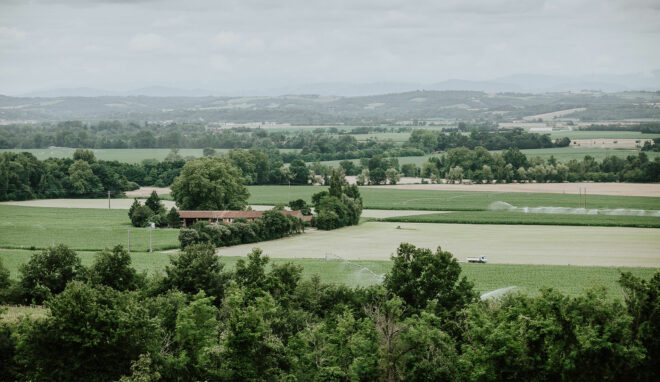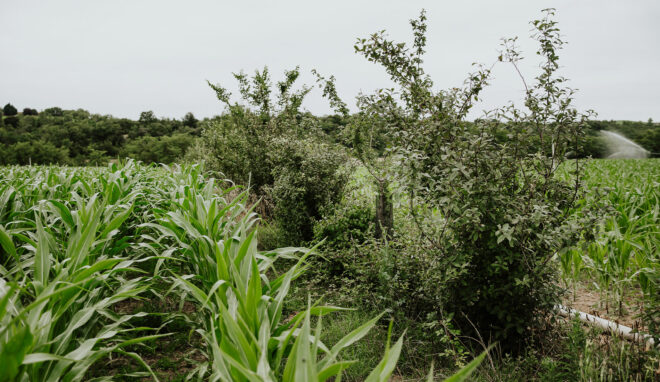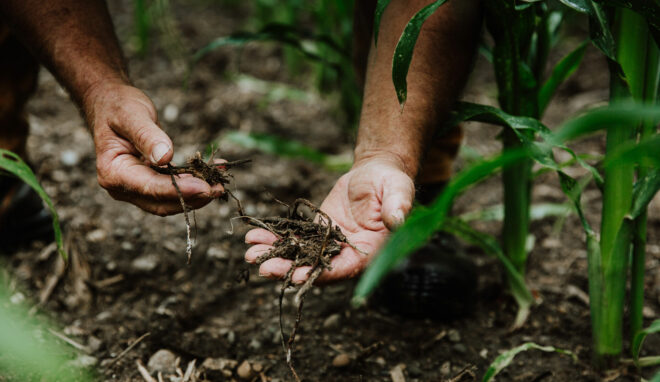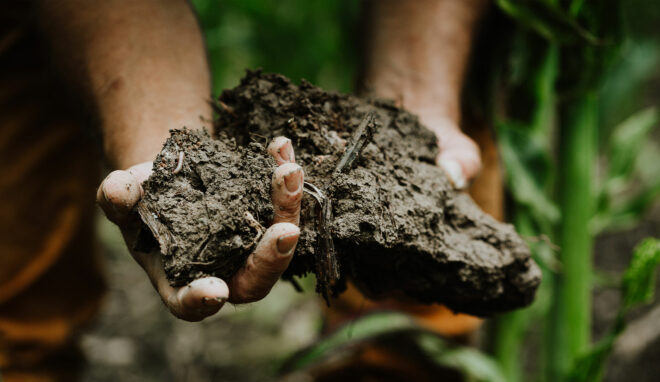Alain Duphil is concerned about the climate. It’s the beginning of July and the cereal producer stands in his corn field in the Ariège valley, France, with gravelly alluvium soil from former glacier moraines. “If it was 5°C cooler we would be under several metres of ice,” he says. “It makes you think about the impact of global warming.”
A few years ago, he decided to reduce tillage, but his original aim was not to improve the CO2 balance of the 155ha farm he manages. Tillage had become a technical constraint rather than a solution on this irrigated land. “The other incentive was financial, as there was real uncertainty at the time about the price of fuel.”
Covered in vetch and phacelia
About a decade ago, Mr Duphil introduced no-till on 9ha with an oat and broad bean cover crop as a trial. After seeing good results, he expanded this approach over 30ha the following year and then to all fields. Currently, the crop rotation in the valley (120ha) starts with three years of maize, followed by barley, sunflowers as catch crop, and finally durum wheat. On 35ha of hillside land without irrigation and on clay-limestone soil, the crops alternate between maize, sunflowers, durum wheat, peas or broad beans and rapeseed.
The cover crops are at the heart of the system. In July, Mr Duphil sows clover with irrigated forage sorghum, which grows to two metres high. The clover continues growing when the sorghum freezes in early winter and stays in place until April. He also aims to produce his own seed for cover crops, to reduce input costs.
The producer applies 3 litres/ha of glyphosate at the end of the cover crop, which is essential in no-till farming. “Everyone should have a choice,” he notes in passing. “Applying these small amounts rather than removing soil carbon seems to me the most sensible form of climate engineering.” The chopper goes 24 hours later. And since he crushes the cover crops, Mr Duphil can also sow vetch/phacelia, which would be otherwise more difficult to manage in a classical direct seeding system. To retain maximum moisture in the soil, one tractor discs while the other sows, with a seed drill mounted to a rototiller. For this purpose, Mr Duphil has invested in a compact disc harrow, because it is important for him to keep herbicide resistance under control. “Between a sunflower and a wheat culture, it might not be unwise to work the earth to a depth of 3 to 4 cm.”
Good yields but low prices
The yields have not been affected by the change of system. “We harvested 12.3t/ha from the 2020 maize crop with a mature variety P9234, that, which gives us a gross margin equivalent to 14.0t/ha,” explains the grain producer.

Alain Duphil hopes to earn 7500€ additional gross income per year through the marketing of CO2 certificates.
In 2020 we achieved a harvest of 12.3t/ha for maize with the P9234 variety.
Alain Duphil
So there has been no yield gap and the costs have dropped. However, the farm has been heavily affected by market fluctuations in recent years and has been looking to regain profitability. With the switch to no-till farming Alain Mr Duphil has freed up time and invested in wood production. Carbon credits were another possibility; following a trade fair in 2020 he turned to Soil Capital, a Belgian firm which has recently become involved in brokering CO2 certificates.
A new market emerges
“Farmers have been waiting in anticipation for far too long and at the same time there is a growing appetite among buyers for carbon certificates,” argues Chuck de Liedekerke, co-founder of the company. From 150 producers in the first campaign, the company will process more than a thousand sales in 2021.
For Mr Duphil, an agricultural engineer and former city dweller whose move to the green sector came from an interest in environmental issues, it was important to ensure that the balance sheet would be sound. Soil Capital uses the “cool farm tool” methodology based on information provided by the farmer, developed jointly by several universities is good enough to gain scientific consensus,” says Mr de Liedekerke. The calculation done by Soil Capital is based on the data provided by the farm, for which the farmer needs to plan around three hours. An independent auditor visits regularly over the course of the five-year program.

Chuck de Liedekerke, co-founder of Soil Capital.
Farmers have been expecting this for too long, and at the same time, buyers’ interest in CO2 certificates is growing
Chuck de Liedekerke
Room for manoeuvre
While the national low-carbon label is being implemented for field crops in France, the revenue created will be subject to prescriptions on practices, anticipates Mr Duphil. He therefore sees the advantage of promoting CO2 sequestration on the carbon market via a private broker. “We are autonomous; we decide what to do and it is the results that count. We are aiming for €50/ha (£43/ha) and the advantage for me is that the sequestration is already working, so there’s no investment. If we reach this goal, I will be paying €980 (£835) a year in valuation and inspection fees to potentially earn €7,500 (£6,387) per year.”
In the first year of enrolling in the programme, a farm’s emissions are taken as a baseline, and then the reduction in emissions over five years is compensated. If, at the beginning of the five years, the farm is already storing carbon, it will be compared to a regional reference and the difference can be monetised. 20% of the certificates generated are retained as a safety reserve and paid out to the farmer after ten years, provided the farmer has not changed his practices.
Financing the transition
Mr Duphil is aware that his soil has significant potential for improvement in terms of carbon storage: “When I arrived on this land, the organic matter had already decomposed a lot. Today we are at 1.5% organic matter content. And the recovery doesn’t happen overnight.” This valuation will therefore take place over the long term. Mr Duphil also hopes for better margins through improved soil quality: “During the first few years, all the nitrogen in the leguminous crops is transferred to micro-organisms to make humus. But I know colleagues who have been involved in storage for 20 years, and who have significantly lowered the amount of nitrogen fertiliser required.
“With the premiums, many will take the plunge, as with organic farming,” he predicts. But profitability will depend on individual farms. “It’s a bit of a blind contract: We don’t know exactly how much we’ll get.” With a system that is already ‘decarbonised’ and a minimum price guaranteed, he can only emerge as a winner. For the others, even if he puts his hopes on a “green France all year round”, it remains to be seen whether market prices (carbon and crops) will be able to finance the transformation.
Read how the two young German farmers Henning and Arne Beecken increase the humus content of their soils.
Organic matter in the soil not only helps the environment, but also the fertility of the soil – for Henning and Arne Beecken, the two aspects cannot be separated from each other. You have completely changed the cultivation and fertilisation practice on their family farm.






